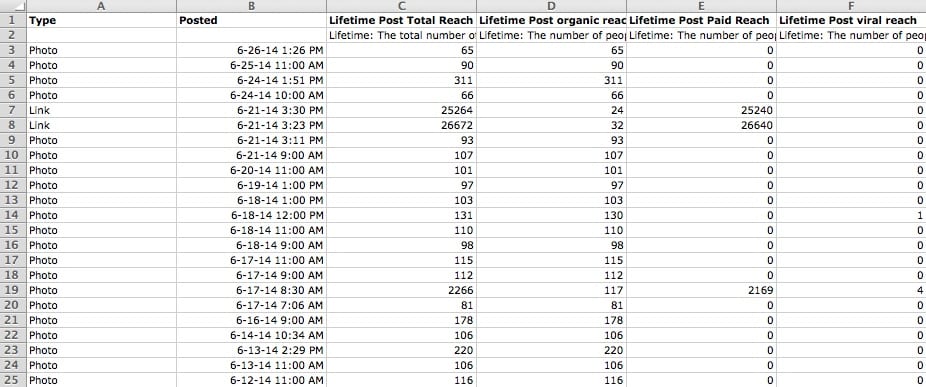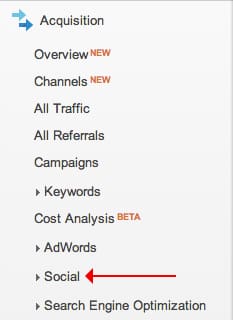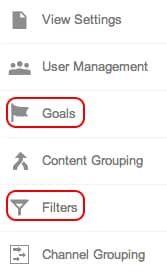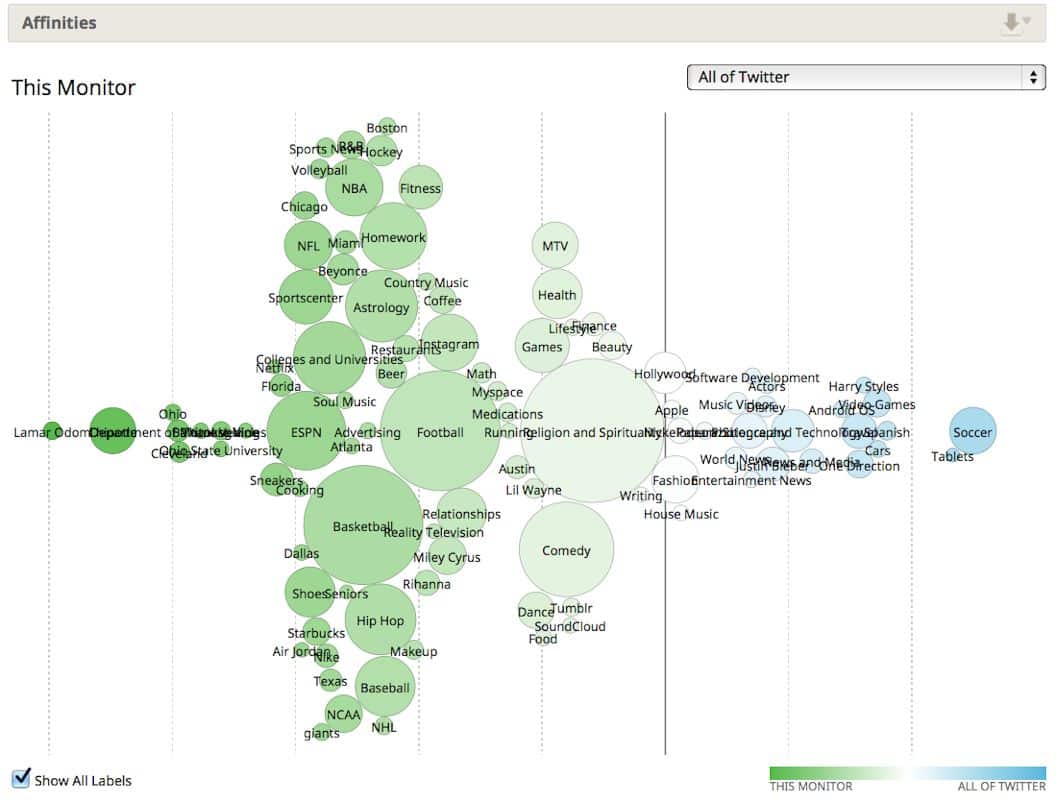Where to Find Your Social Data
Social data is everywhere, and these are a few of the places where you can find it.
We constantly hear people talking about big and social data, and the concept of using these social data in order to build strategies, identify opportunities and construct campaigns is quite exciting. The issue we face, however, is that it is not entirely clear where we can find these social data in order to begin harnessing their value.
These sources are just a few of the places where social data exists and where it can be extrapolated and used in order to achieve any one of the above-mentioned goals.
Owned Social Media
This is a given. Your owned social media – any account that is owned and operated by your brand on networks like Facebook, Twitter or LinkedIn, to name a few – possess mountains of data that can be mined and analyzed for your own needs.
Raw data might not look very exciting (see the Excel spreadsheet below) but for anyone who knows how to use it, it certainly is.

Screen Taken 6-27-14
You can export reports and analyze data sets directly from networks like Facebook, Twitter, LinkedIn, and now Google+ with their latest My Business feature. This data can then be manipulated in a number of ways to serve your own purposes.
Google Analytics
Google Analytics is the example, but virtually any platform used to monitor web traffic provides us with an exorbitant amount of data – and not just web data, either. (Google Analytics was chosen because of the websites that monitor their traffic, roughly 95% use Google Analytics.)

Screenshot Taken 1-28-2014
While most people use Google Analytics simply to monitor web traffic, the social menu (shown above as a subsection beneath the Acquisition tab) provides some detailed reports on the activities taken by your social audience. Learn their tastes and interests using Universal Analytics, study their behavior on your website looking at things like the Users Flow chart and begin to craft strategies that you know will appeal to these interests and habits.
This process can be further optimized by using Goals and Filters in Google Analytics to begin filtering out traffic and focusing only on a social network, for example, then setting goals to measure the effectiveness of campaigns or strategies on different networks.

Screenshot Taken 1-28-2014
Social Media Monitoring and Listening Technologies
There are no shortage of technologies that exist on the market that make it easy for brands to collect and analyze copious amounts of social data – from industry data right down to competitor insights.
Tools range anywhere from free or inexpensive platforms that provide some fairly useful insights – like Mention, for example – to high-end enterprise level tools that run in-depth analyses on the data collected and provide you with some extremely useful reports – tools such as Crimson Hexagon.

Image Credit: Crimson Hexagon
Social Ad Reports
Social advertising is still in a state of infancy, and therefore, a state of complete affordability. A small injection of cash can lead to major – and very measurable – results. Those results are full of valuable data (because these results go into greater detail about the activities taken by your audience).
When or after running a social ad campaign, collect all of your data, download all of your reports and really start to analyze the results to see where opportunities exist, what you might be able to learn about your target demographics, and how you can turn this small investment into some hugely beneficial strategies that generate equally impressive (if not more impressive) organic results.
Conclusion
While there is data everywhere, these are just a few of the places where brands can begin sourcing and mining their own data. These insights can then be moulded into whatever you need them to be. The beauty of raw data is that they are simply numbers until something is done with them. So they are completely in your control. And as we all know, control is nice to have when trying to build a brand on social media.
Where do you look for social data? Tell us in the comments below or on Twitter!


 Corey Padveen is the Director of Global Social Business Strategy at t2 Marketing International. Corey is Google AdWords and Analytics Certified, a Certified Inbound Marketer and a principle theorist on the notions of Social Equity and ResponsiveBrandingTM. He is also a regular contributor to leading industry publications, such as Search Engine Journal and Social Media Today, and a keynote speaker at digital marketing and social media conferences around the world.
Corey Padveen is the Director of Global Social Business Strategy at t2 Marketing International. Corey is Google AdWords and Analytics Certified, a Certified Inbound Marketer and a principle theorist on the notions of Social Equity and ResponsiveBrandingTM. He is also a regular contributor to leading industry publications, such as Search Engine Journal and Social Media Today, and a keynote speaker at digital marketing and social media conferences around the world.  Julio Viskovich is a highly sought after social selling consultant, trainer and implementation specialist. Julio was named by Forbes as one of the Top 30 Social Selling Influencers in the World and is the author of Sellarketing – a tweetable book to help sales and marketing leaders embrace and adopt social media as part of their process. After being the internal social media trainer and the face of social selling to HootSuite’s 9 million plus users, he founded
Julio Viskovich is a highly sought after social selling consultant, trainer and implementation specialist. Julio was named by Forbes as one of the Top 30 Social Selling Influencers in the World and is the author of Sellarketing – a tweetable book to help sales and marketing leaders embrace and adopt social media as part of their process. After being the internal social media trainer and the face of social selling to HootSuite’s 9 million plus users, he founded  With every action taken on social channels, social data is being gathered and analyzed behind the scenes. First, let’s dispel one rumour very quickly: activity on social media is measurable. You just need to know what to measure and where to find your social data.
With every action taken on social channels, social data is being gathered and analyzed behind the scenes. First, let’s dispel one rumour very quickly: activity on social media is measurable. You just need to know what to measure and where to find your social data.


